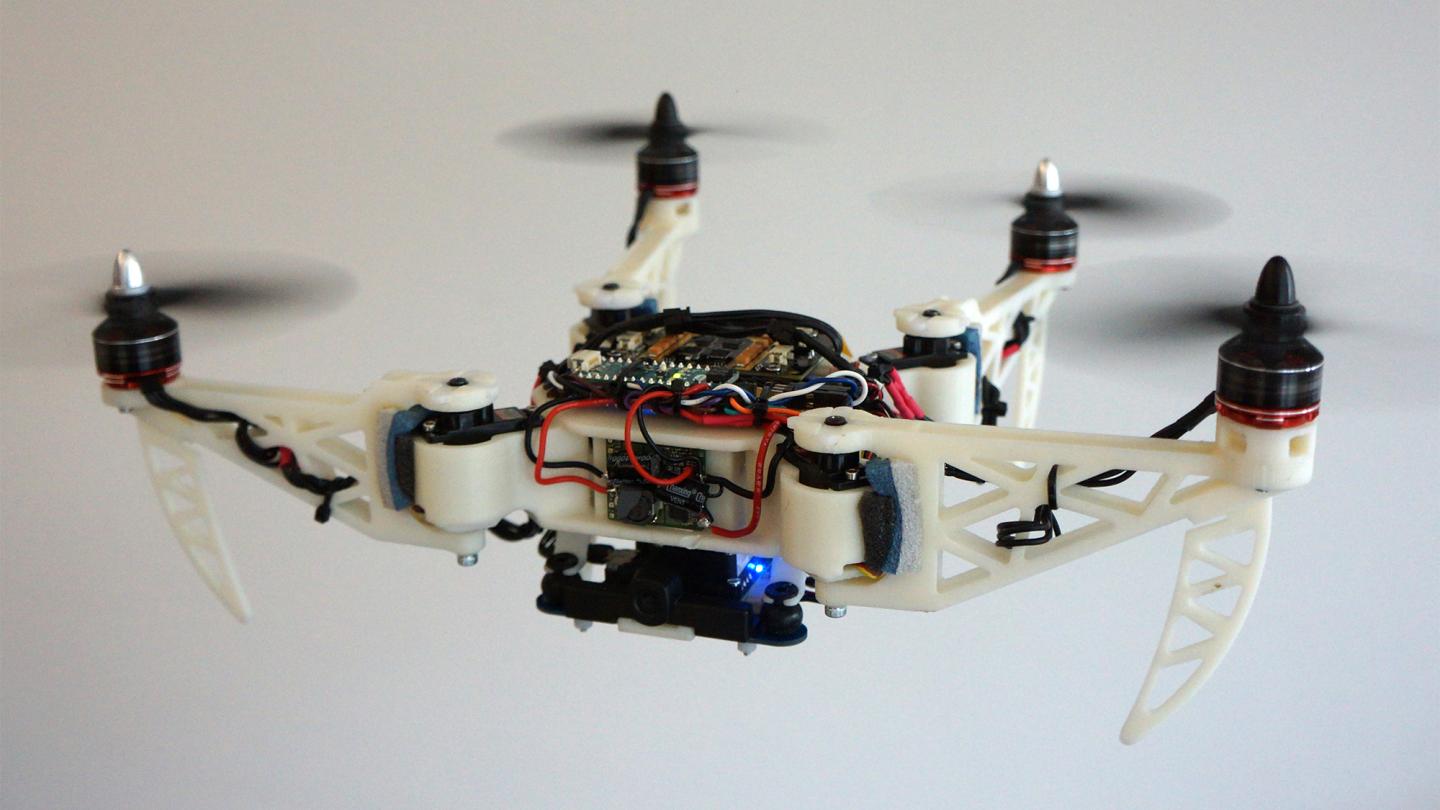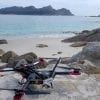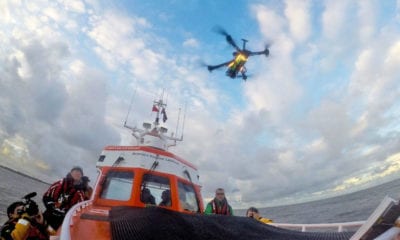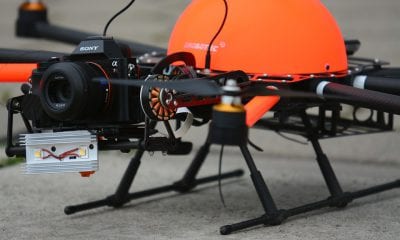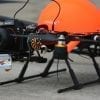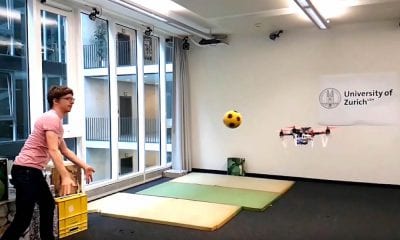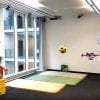News
Foldable Autonomous Drone with Potential for Natural Disaster Search
Enthusiasts are familiar with drones of a variety of shapes and sizes however, in a first, researchers at the University of Zurich and École polytechnique fédérale de Lausanne (EPFL) have developed a quadcopter that can change its shape and size in flight. The flying robot could assist search and rescue teams inspect a damaged building after an earthquake or a fire and look for people trapped inside.
Having a drone that could change its shape and size to fit through tight spaces on the fly could prove extremely valuable. Researchers took inspiration from how some birds fold their wings to fly through narrow passages.
“Our solution is quite simple from a mechanical point of view, but it is very versatile and very autonomous, with onboard perception and control systems,” says Davide Falanga, researcher at the University of Zurich and the paper’s first author in a press statement.
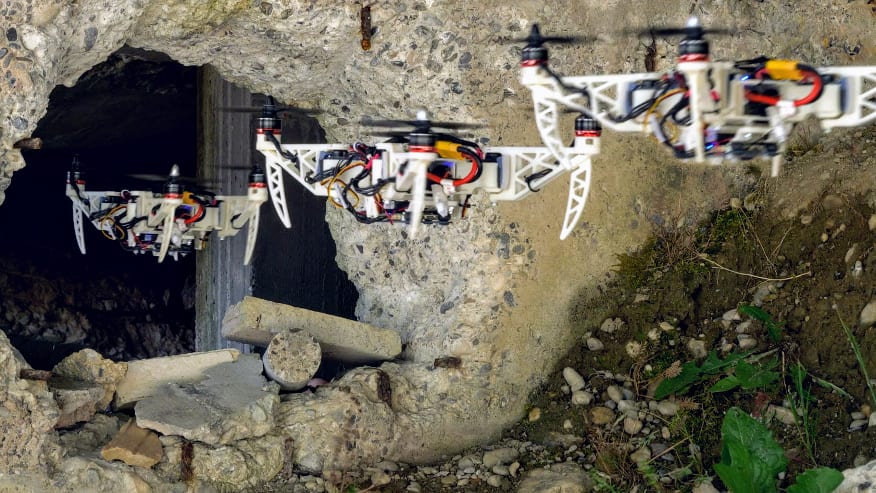
The new drone can squeeze itself to pass through gaps and then go back to its previous shape, all the while continuing to fly. (Image: UZH)
Changing into several shapes
The team’s quadcopter has four propellers, each of which can rotate independently. The drone has a standard X shape configuration, with four arms stretched out. Faced with a narrow passage however it can modify into an H shape. It can even shrink itself into an O shape, arms folded into its body. Wait, it isn’t done yet- it can also transform into a T shape, allowing an onboard camera mounted on the central frame to get as close as possible to its focal object.
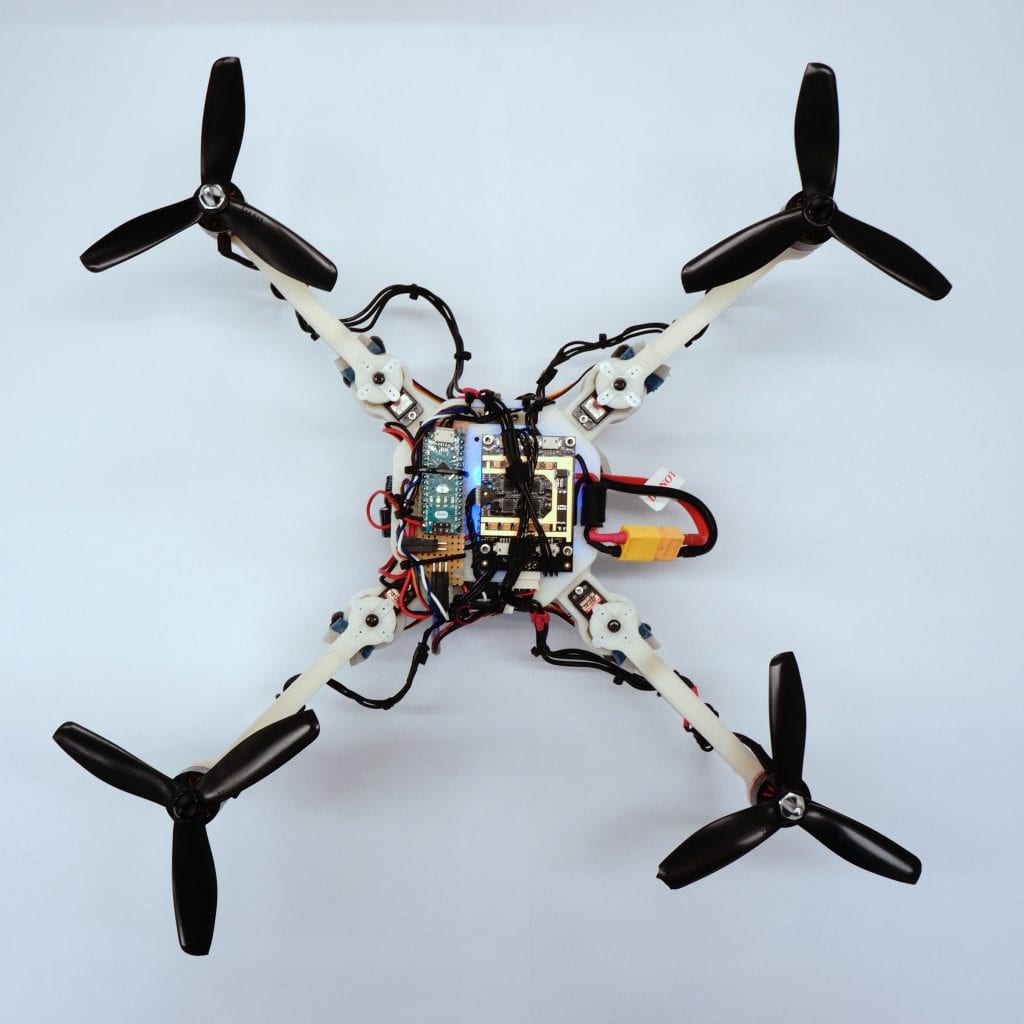
The standard configuration is X-shaped, with the four arms stretched out and the propellers at the widest possible distance from each other. (Image: UZH)
“The morphing drone can adopt different configurations according to what is needed in the field,” says Stefano Mintchev, coauthor and researcher at EPFL.
While the working concept model is impressive, the researchers want to improve the structure of the drone so that it can fully fold in three dimensions, offering even more shapes. And they want to create full autonomy—a drone that looks at the dynamic terrain in an apartment building partially destroyed by an earthquake for example and change shape to meet its current needs.
The new drone can squeeze itself to pass through gaps and then go back to its previous shape, all the while continuing to fly, researchers said. In comparison to other drones, this morphing drone can manoeuvre in tight spaces and guarantee a stable flight at all times.
“The morphing drone can adopt different configurations according to what is needed in the field,” said Stefano Mintchev, researcher at EPFL. The ace in the hole is a control system that adapts in real time to any new position of the arms, adjusting the thrust of the propellers as the centre of gravity shifts.
First step to fully autonomous rescue searches
In the future, the researchers hope to further improve the drone structure so that it can fold in all three dimensions. Most importantly, they want to develop algorithms that will make the drone truly autonomous, allowing it to look for passages in a real disaster scenario and automatically choose the best way to pass through them.

